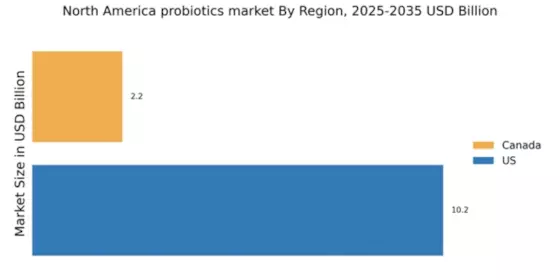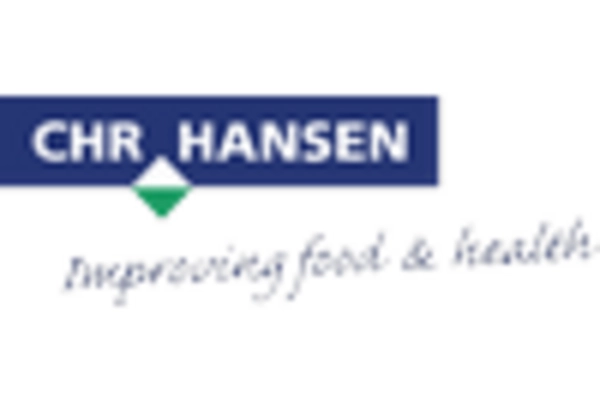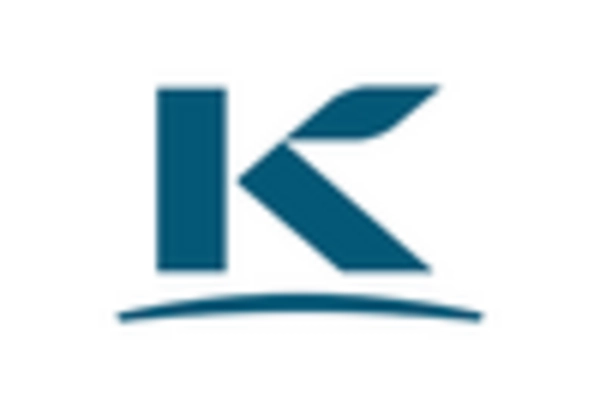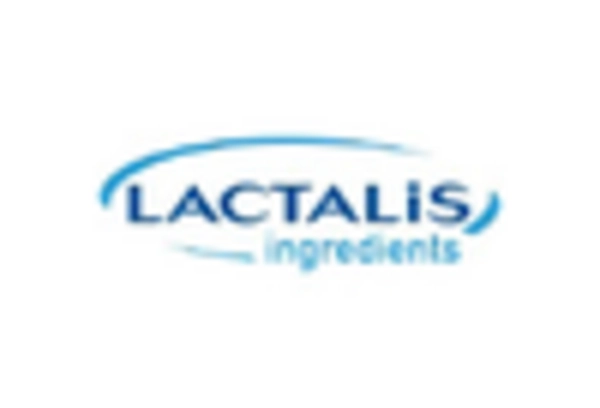Aging Population
The demographic shift towards an aging population in North America is significantly influencing the probiotics market. Older adults are increasingly seeking natural solutions to manage health issues such as digestive disorders, which are prevalent in this age group. Probiotics are perceived as a beneficial addition to their diets, potentially alleviating symptoms and improving quality of life. Market data indicates that the segment targeting seniors is projected to grow by 10% over the next five years. This demographic trend is prompting companies to develop specialized probiotic formulations tailored to the needs of older consumers, thereby expanding the market's reach and diversity.
Growing Health Consciousness
The increasing awareness of health and wellness among consumers is a pivotal driver for the probiotics market. As individuals become more informed about the benefits of gut health, there is a notable shift towards incorporating probiotics into daily diets. This trend is reflected in the rising sales of probiotic supplements and functional foods, which have seen a growth rate of approximately 8% annually in North America. Consumers are actively seeking products that promote digestive health, boost immunity, and enhance overall well-being. This heightened focus on health is likely to propel the probiotics market further, as manufacturers respond by innovating and expanding their product lines to meet consumer demands.
Rising Interest in Gut Health
The growing recognition of the gut-brain connection is driving interest in gut health, which is a crucial factor for the probiotics market. Research suggests that a healthy gut microbiome can influence mental health, immunity, and metabolic processes. As a result, consumers are increasingly turning to probiotics as a means to support gut health. This trend is evident in the surge of probiotic products that emphasize their gut health benefits, with sales in this category rising by 15% in recent years. The focus on gut health is likely to continue shaping product development and marketing strategies within the probiotics market.
Innovations in Product Development
Innovations in product development are a key driver for the probiotics market, as companies strive to differentiate their offerings. Advances in technology have enabled the creation of more effective probiotic strains and delivery systems, enhancing product efficacy. For instance, encapsulation techniques are being utilized to protect probiotics from harsh stomach conditions, ensuring that more live cultures reach the intestines. This innovation is expected to attract a broader consumer base, including those who may have previously been skeptical about probiotic benefits. The introduction of new formats, such as beverages and snacks, is also expanding the market's appeal, potentially increasing overall sales by 12% in the coming years.
Increased Availability of Probiotic Products
The increased availability of probiotic products across various retail channels is significantly impacting the probiotics market. With the rise of e-commerce and the expansion of health food stores, consumers now have greater access to a diverse range of probiotic options. This accessibility is likely to drive sales, as consumers are more inclined to purchase products that are readily available. Market analysis indicates that online sales of probiotics have surged by 20% in the past year, reflecting changing shopping habits. As retailers continue to stock a wider array of probiotic products, the market is expected to grow, catering to the evolving preferences of health-conscious consumers.


















Leave a Comment